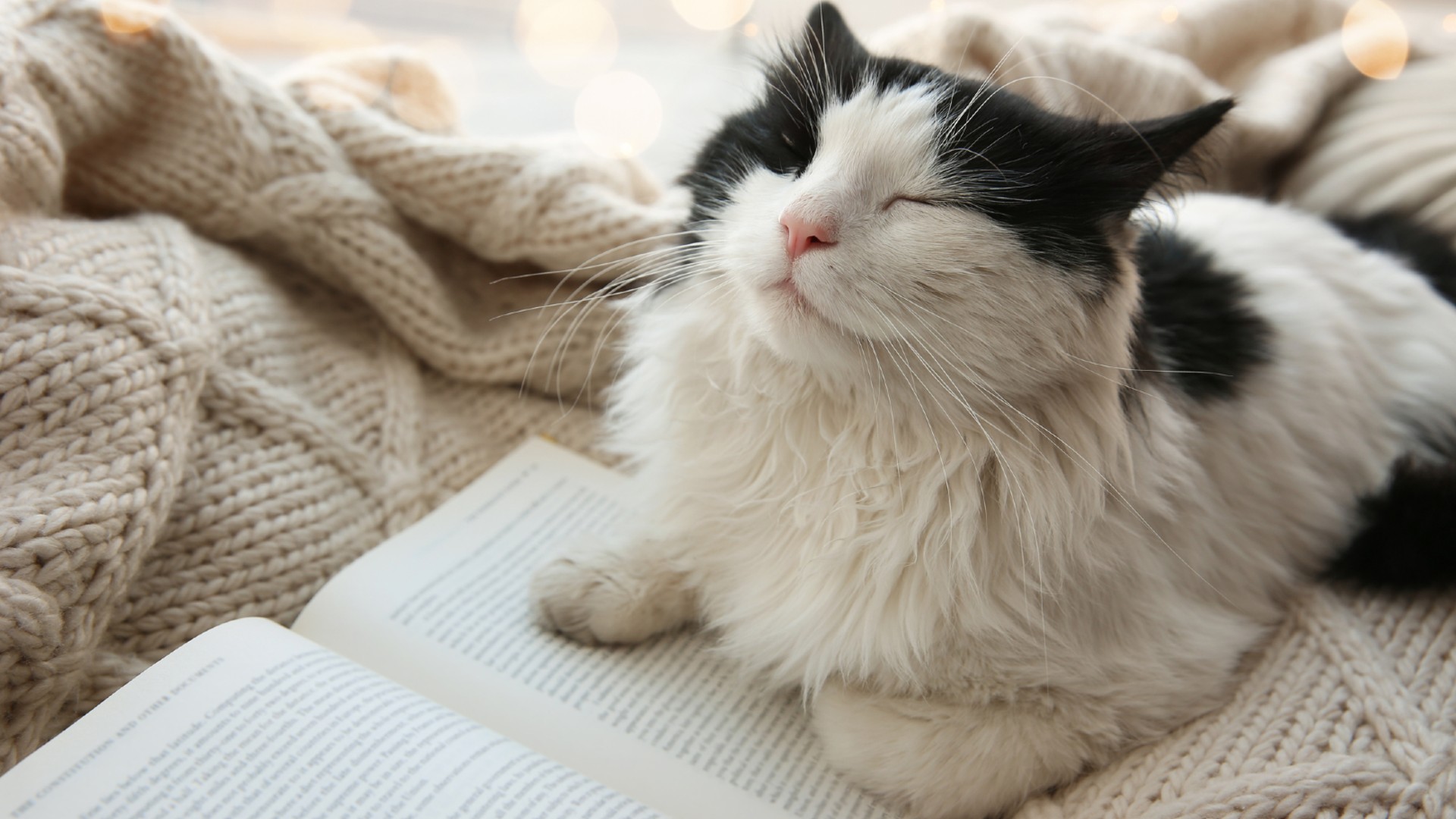The purr, a soft vibration that housecats make as they breathe in and out, is unique to cats and cat-like animals. Cougars, cheetahs and a few other big cats purr, too; so do civets, genets and mongooses. But why do cats purr?
"It's one of those behaviors that we mostly understand, but not totally," said Mikel Delgado, a certified cat behavior consultant at Feline Minds, told Live Science. "Purring is likely reflexive, like breathing."
The comfortable rumble of a cat's purr is one of life's little joys for cat owners. But is that true for the cat, too? Yes, generally, cats purr when they are feeling good. Whether sitting on a lap or sprawling in sunshine, a purring cat is usually a happy cat.
"Ninety percent of the time, purring is positive," Delgado said. "It means that your cat is experiencing pleasure. It's happy, content and feels safe."
Related: Why can't house cats roar?
Other reasons cats purr
But research suggests that cats purr for other reasons, too. One is related to survival. Kittens are born blind and deaf; they start purring a few days after birth. In the wild, purring is safe because it is quiet, so it's unlikely that predators will hear a kitten purr.
At first, purring helps kittens stay close to mother cats, Dr. Kate Anderson, a veterinarian and professor at Cornell University, told Live Science. "They actually find their mom by purring, and their mom checks on them and then she purrs back," Anderson explained.
Get the world’s most fascinating discoveries delivered straight to your inbox.
Kittens also purr while they are nursing. "The purr may even lead to some bonding between mom and kittens," Delgado said.
Cats keep purring when they grow up. "They'll purr with another cat that they're friendly with," Anderson said.
Often, cats purr while grooming each other, when "there's some caretaking behavior going on," Delgado said. Domestic cats purr around familiar humans and dogs. Cats also purr while resting, eating or enjoying their alone time.
What's more, cats may purr to get what they want. Most of the time, said Delgago, purring is a reflex; but purring can be intentional as well. According to a 2009 study in the journal Current Biology, cats use a specific "solicitation purr" to ask for food or to nudge humans to get out of bed. This purr mixes in higher-pitched frequencies that sound a bit like a baby crying. "When humans hear cats purring loudly using a solicitation purr," Anderson said, "they see it as urgent."
Although cats usually purr when they're happy; that's not always the case. They sometimes purr when they are stressed, Delgado said.
"I had a cat that used to purr at the veterinary office — and my cat definitely did not like going to the veterinarian!" Delgado said. "So that was kind of a stress response."
Anderson has treated many injured, purring cats; she also thinks purring can be a coping mechanism, as it may help them self-soothe when they are sick, scared or dying.
One idea is that purring may help cats heal. A 2001 study in The Journal of the Acoustical Society of America noted that cats purr at frequencies between 20 and 150 hertz, which are similar to frequencies used in human treatments for bone growth and muscle pain.
But there is no strong evidence to support or refute this idea, Delgado said. "There's never been a study of cat purrs to suggest that they have any magical healing powers," she said. "But it could be a self-comforting thing."
So how can cat owners tell which purr is which? "You have to be a little bit of a detective," Delgado said. Depending on the context, a cat owner can make good guesses about why their cat is purring.
If a cat is healthy, the next clue to a purr's meaning is body language, Delgado said. Does the cat look happy and relaxed? If so, the answer is probably, "Yes, your cat is enjoying this moment with you."
Meg Duff is a freelance science journalist and audio producer based in Brooklyn. She holds an M.F.A from New York University's Arthur L. Carter Journalism Institute. Her stories have also appeared in Slate Magazine, Scientific American, MIT Technology Review, and elsewhere.





